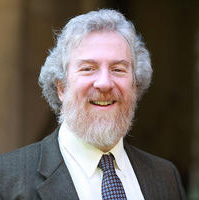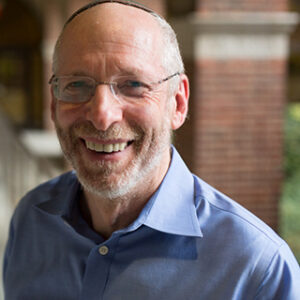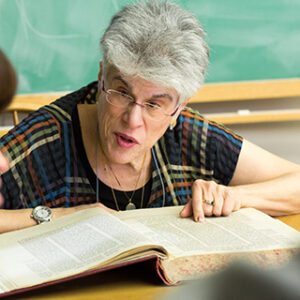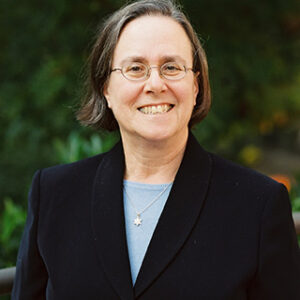
Shemitah, Freedom, and Covenant in the Face of Assimilation
May 9, 2014 By Matthew Berkowitz | Commentary | Behar
Parashat Behar opens with the commandment to observe the sabbatical cycle (for six years, one may plant crops and work the land and then, in the seventh year, the land must rest—what is known in halakhic terms as shenat shemitah, “the year of release”); shemitah or “release” is observed today in the Land of Israel.
Read More
Slivers of Memory (Yom Ha-sho’ah V’-ha-gevurah)
May 2, 2014 By Samuel Barth | Commentary | Yom Hashoah
Several decades ago, many ceremonies commemorating the Shoah attempted to tell the entirety of the story, with numbers that defied comprehension and broad-sweeping trends of history that submerged the experience of individuals in the story of a world run amok. In more recent years, I have observed that the experience and testimonies of individuals have become more prominent, perhaps serving as holographic slivers that represent the wider context. As survivors of the Holocaust are fewer in number each year, we turn to the writings, art, songs, and recordings born out of those years.
Read More
Call Them by Their Names
May 2, 2014 By Joel Alter | Commentary | Emor
When I’m at a hotel over Shabbat, I have a set Friday afternoon ritual.
Read More
Pride, Power, and Corruption in the Name of God
May 2, 2014 By Matthew Berkowitz | Commentary | Emor
In the wake of religious fundamentalism that plagues our world today, why aren’t religious leaders vocal in their opposition to bloodshed and corruption in the name of God?
Read More
Yom Hasho’ah: Documents From the JTS Library and Songs by Johanna Spector
Apr 28, 2014 By Library of the Jewish Theological Seminary | Public Event audio | Yom Hashoah
Dr. Johanna Spector (1915–2008), who taught Ethnomusicology at JTS, was a Holocaust survivor who documented Jewish music from around the world. This special Holocaust Memorial Day commemoration will highlight her life and work, as well as The JTS Library’s Johanna Spector Archives and Holocaust-related materials.
Read More
Shema’ (Part 1)—What We Know and What We Don’t
Apr 25, 2014 By Samuel Barth | Commentary
Ask almost any group of Jews to identify the most important Jewish “prayer” of all, and at the top of the list will almost certainly be the Shema’. Technically, it is not a prayer, for it is not addressed to God, but to the community of Israel. But that is a technical quibble, so (for now) let it pass. Traditionally, we say the Shema’ twice each day within the formal liturgy, and also just before going to sleep.
Read More
The Kosher Golden Rule
Apr 25, 2014 By Matthew Berkowitz | Commentary | Kedoshim
Two great questions are often asked in our community: What is our obligation to our fellow Jews?
Read More
Being Holy in the 21st Century
Apr 25, 2014 By Gerald C. Skolnik | Commentary | Kedoshim
If I were challenged to present a one-sentence, pithy articulation of the overarching responsibility of a Jew in this world, I would be hard pressed to find abetter phrasing than the second verse of this week’s Torah reading, Parashat Kedoshim: “Kedoshim tih’yu, ki kadosh Ani Adonai Eloheikhem”(Be holy, for I the Lord your God am holy).
Read More
The Meaning of the Shmurah Matzah
Apr 18, 2014 By Matthew Berkowitz | Commentary | Pesah
One of the centerpieces of seder night is the eating of matzah, the unleavened bread.
Read More
“This Year We Are Slaves”: How and Why Do We Celebrate Freedom in the Face of Oppression?
Apr 18, 2014 By Eliezer B. Diamond | Commentary | Pesah
What does it mean to celebrate Passover in the shadow of death?
Read More
The Song of Songs: Lovers Absent and Present
Apr 18, 2014 By Samuel Barth | Commentary
This Shabbat, Hol Hamo’ed Pesah, we read Shir Hashirim, the Song of Songs, the provocative and enigmatic cycle of lusty love poetry that is embraced (though not without challenge) by the canon of the Hebrew Bible. Dr. Francis Landy of Calgary University wrote a powerful and lyrical treatise on the Song of Songs entitled Paradoxes of Paradise, which opens with the reflection of Rabbi Akiva—“All the Scriptures are kedoshim, holy, but Shir Hashirim kodesh kodashim, the Song of Songs is the Holy of Holies”—radically deploying the term otherwise used to describe the holiest place in the Temple.
Read More
Sacrifice and Humility
Apr 11, 2014 By Matthew Berkowitz | Commentary | Aharei Mot
The Torah reading opens with God speaking to Moses in the aftermath of the death of Aaron’s two sons, Nadav and Avihu, who “drew too close to the presence of the Lord” (Lev. 16:1). But most immediately, as is the case in the aftermath of any trauma, we want to learn how to avoid another tragic “accident.”
Read More
Preparing for Seder Part 3—Visual Midrash on the Four Children
Apr 11, 2014 By Samuel Barth | Commentary | Pesah
The four children (formerly known as the four sons) are among the most provocative part of the seder—for children provoke their parents. That is why Elijah is needed to restore peace between the generations. The evolution of the text as we find it in our Haggadah is complex, and interesting explanations can be found in the recent JTS collection of Sound Bytes of Torah for Passover on YouTube. I have long been fascinated by the interpretation in imagery that offers four books, presumably each book representing one of the four “types” of child. But which one is which?
Read More
For Millennials and Their Families
Apr 10, 2014 By Arnold M. Eisen | Commentary | Shabbat Hagadol | Pesah
I gathered six students from JTS’s undergraduate Albert A. List College of Jewish Studies in my office last week to talk about the ways in which family dynamics add meaning—and tension—to family Passover seders. I wanted to find out how these dynamics play out at the seders of my students, and share their insights with you here—millennials and college students, teens and tweens—in the hope that our discussion about the holiday will enrich yours.
Read More
Men And Women: In The Kitchen And At The Seder
Apr 8, 2014 By Judith Hauptman | Short Video | Pesah
Read More
The Right Answers For The Wrong Questions
Apr 8, 2014 By Julia Andelman | Short Video | Pesah
Read More
The Gefilte Fish On My Seder Plate
Apr 8, 2014 By Anne Lapidus Lerner | Short Video | Pesah
Read More

The Bitter Truth
Apr 8, 2014 By David C. Kraemer | Short Video | Pesah
This short video details the history of maror and suggests the possibility of a maror tasting to reflect on what best symbolizes slavery at a seder.
Read More
SUBSCRIBE TO TORAH FROM JTS
Our regular commentaries and videos are a great way to stay intellectually and spiritually engaged with Jewish thought and wisdom.




